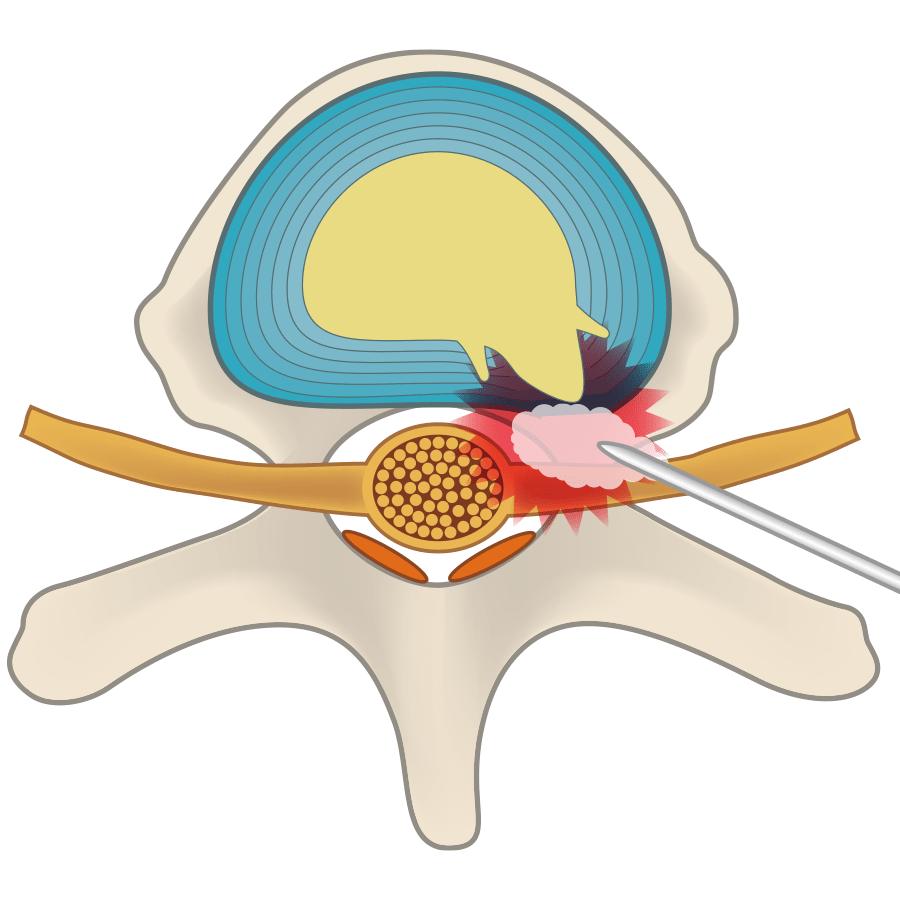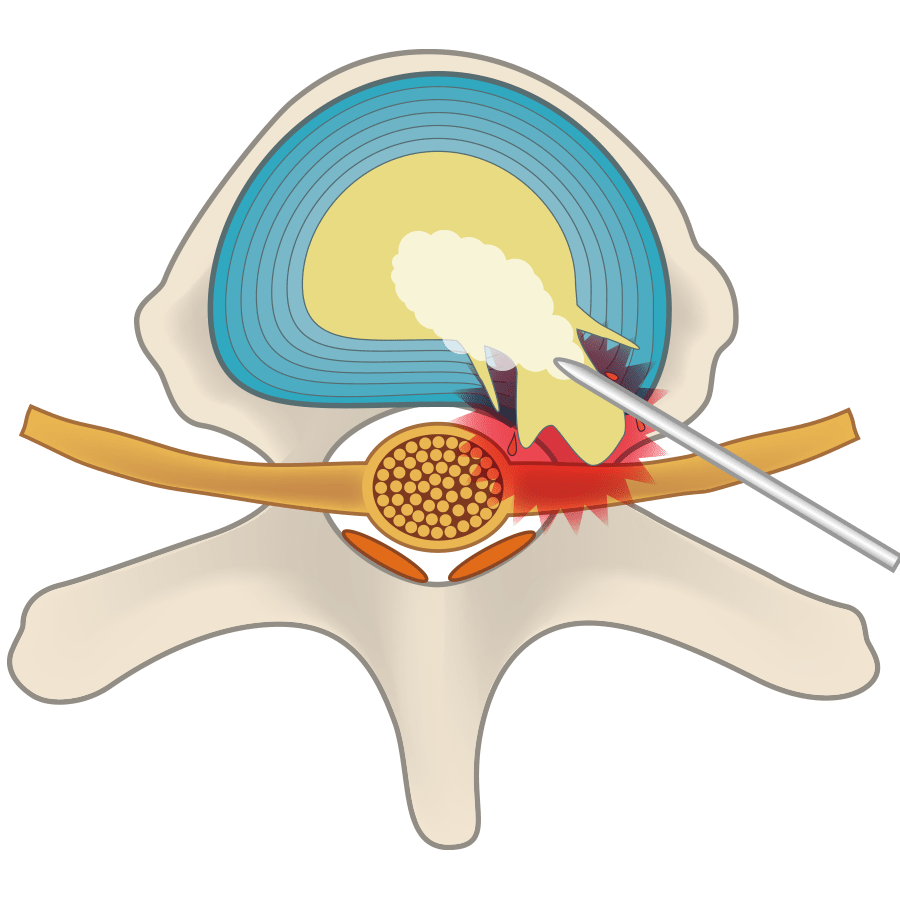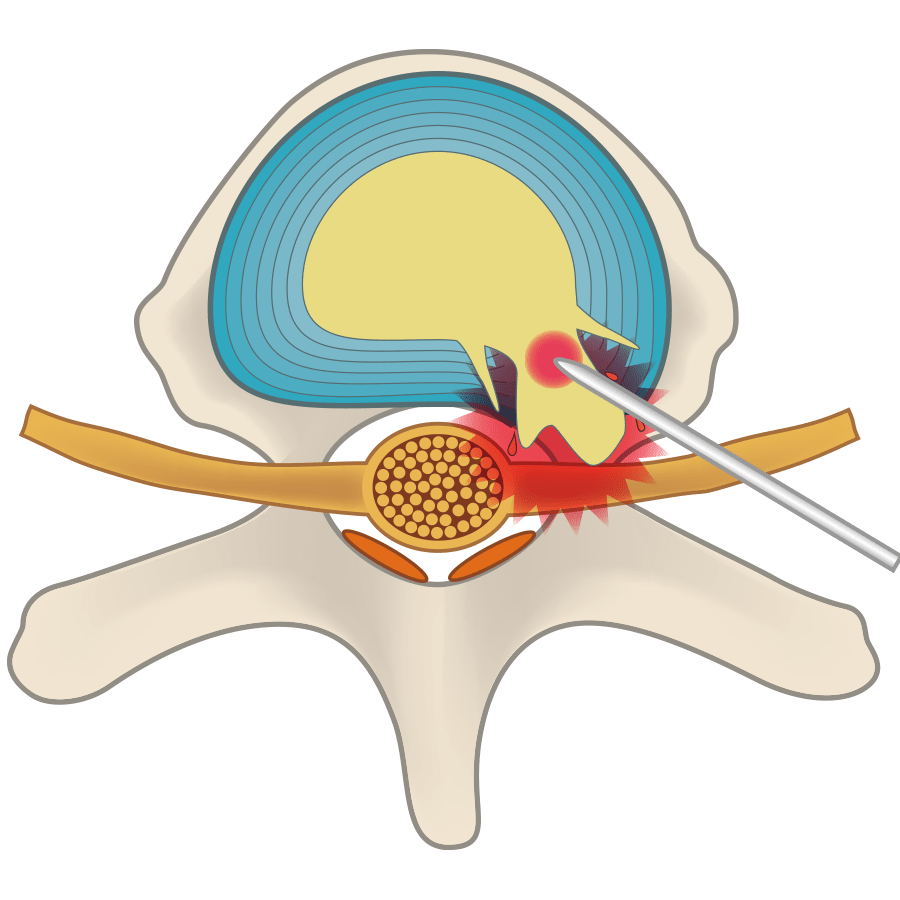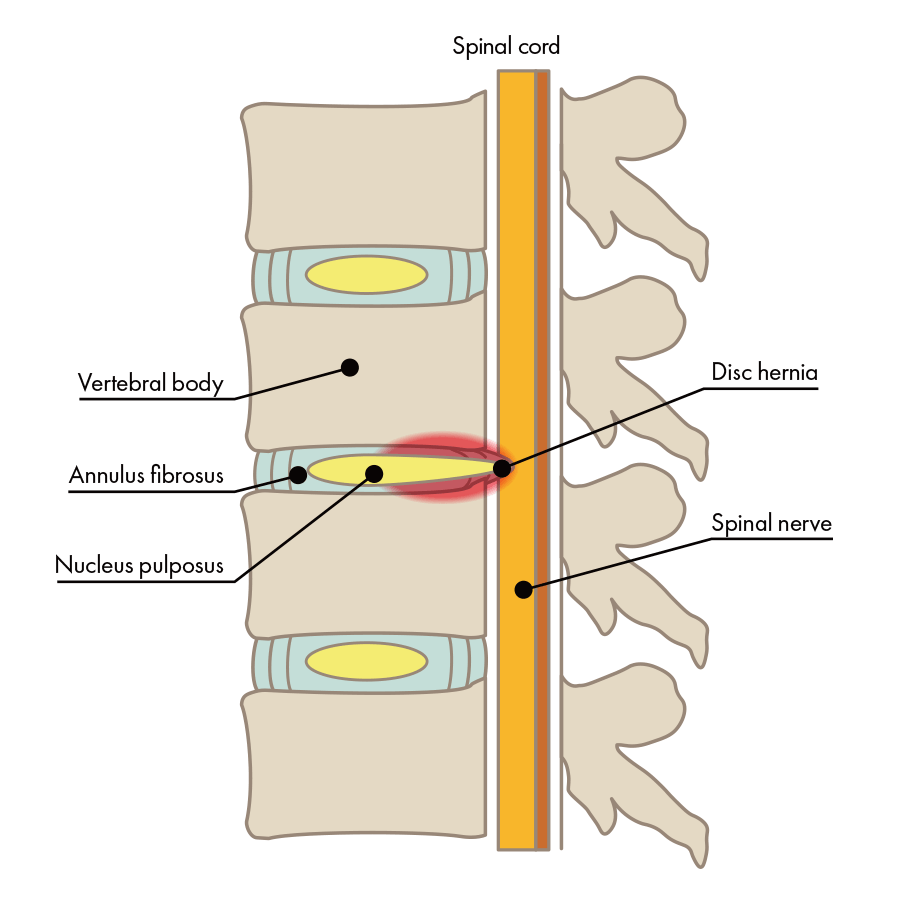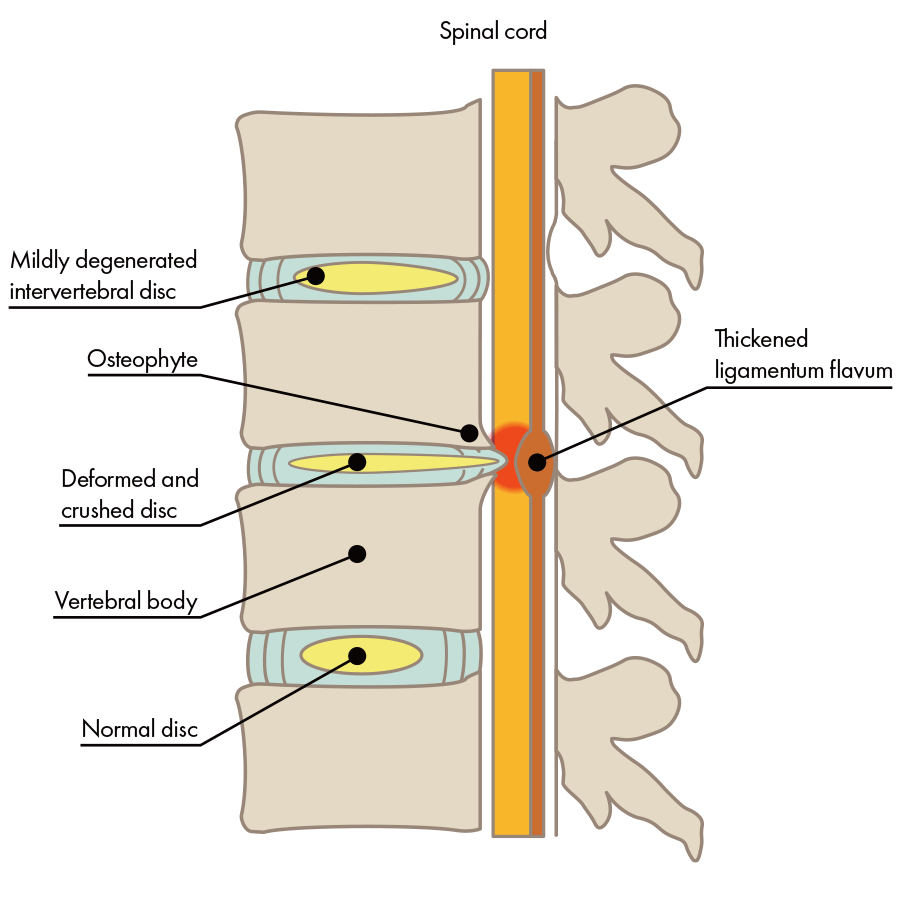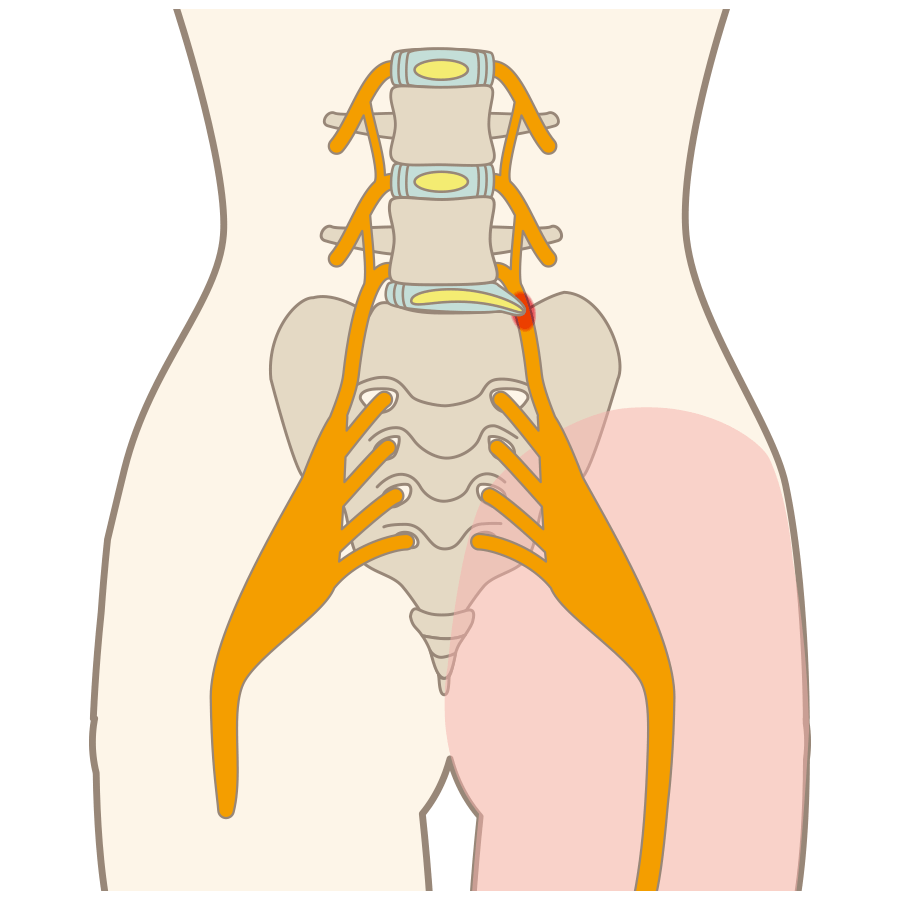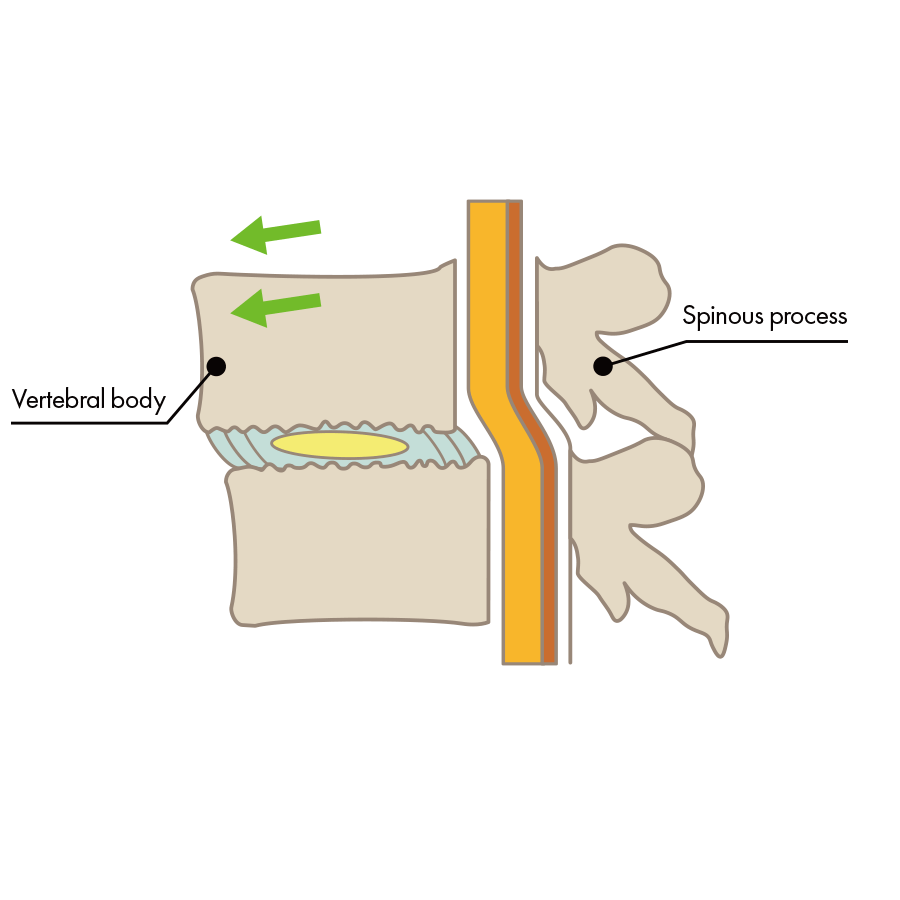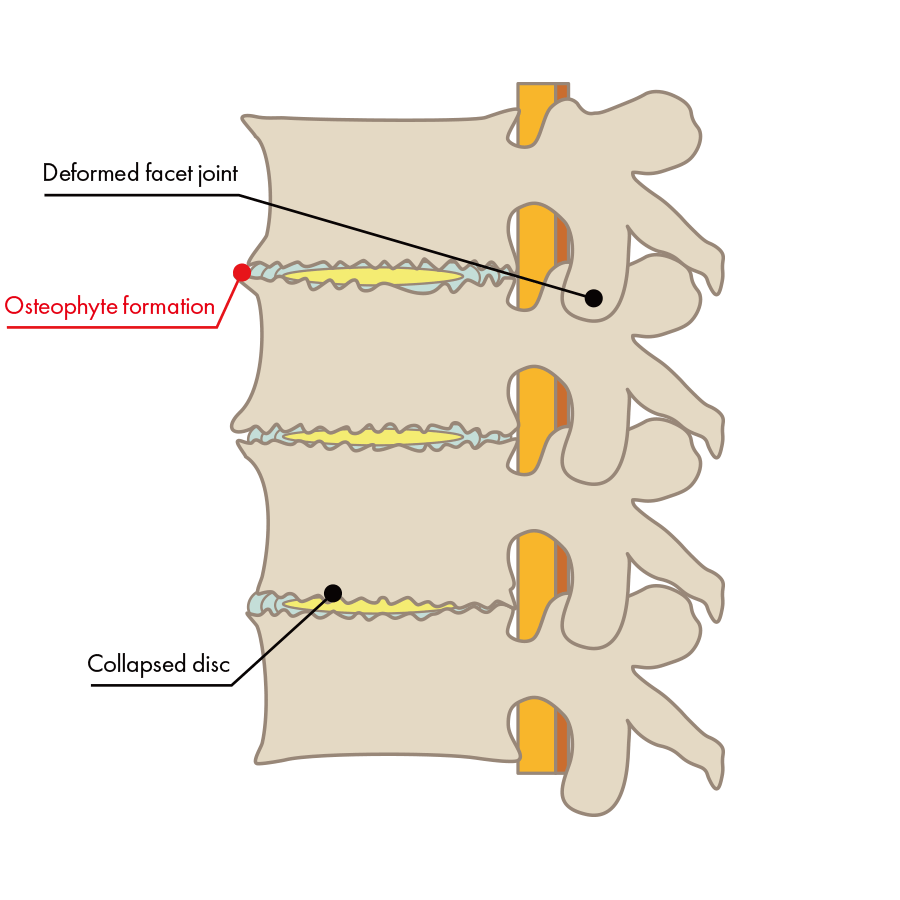Sciatica/ Targeted Conditions
What is sciatica?
Inflammation of the sciatic nerve causes numbness and pain; however, since there are many conditions that produce inflammation of the sciatic nerve to begin with, “sciatica” is a name for the symptoms.
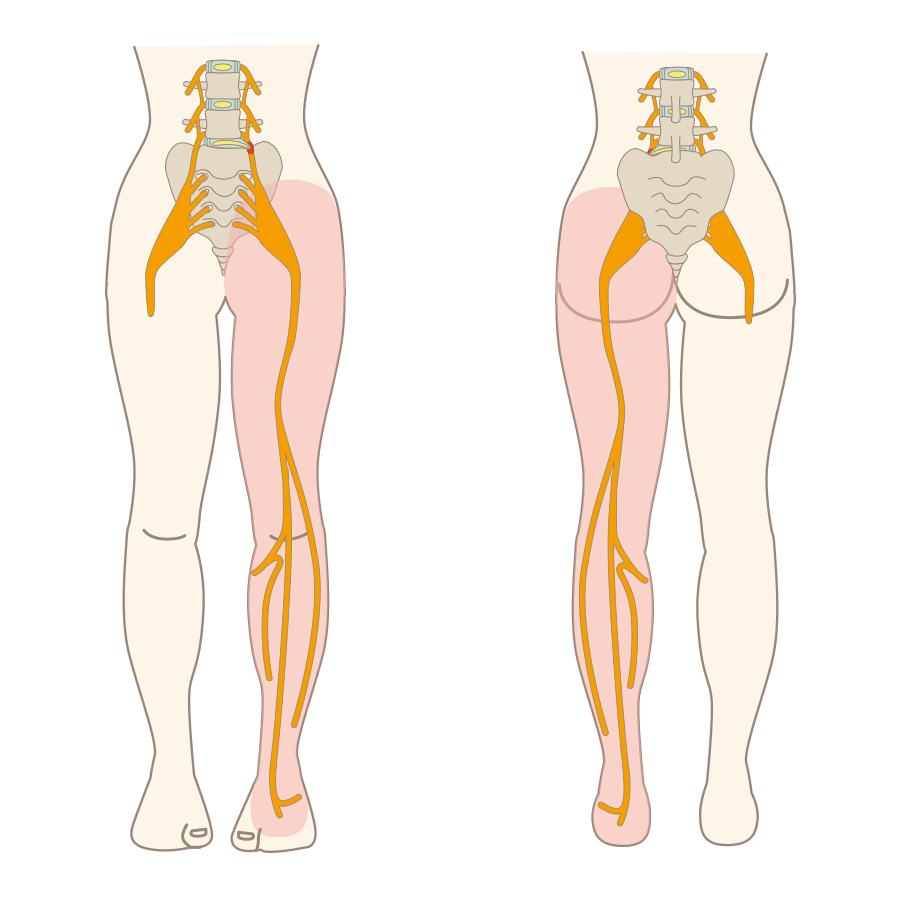
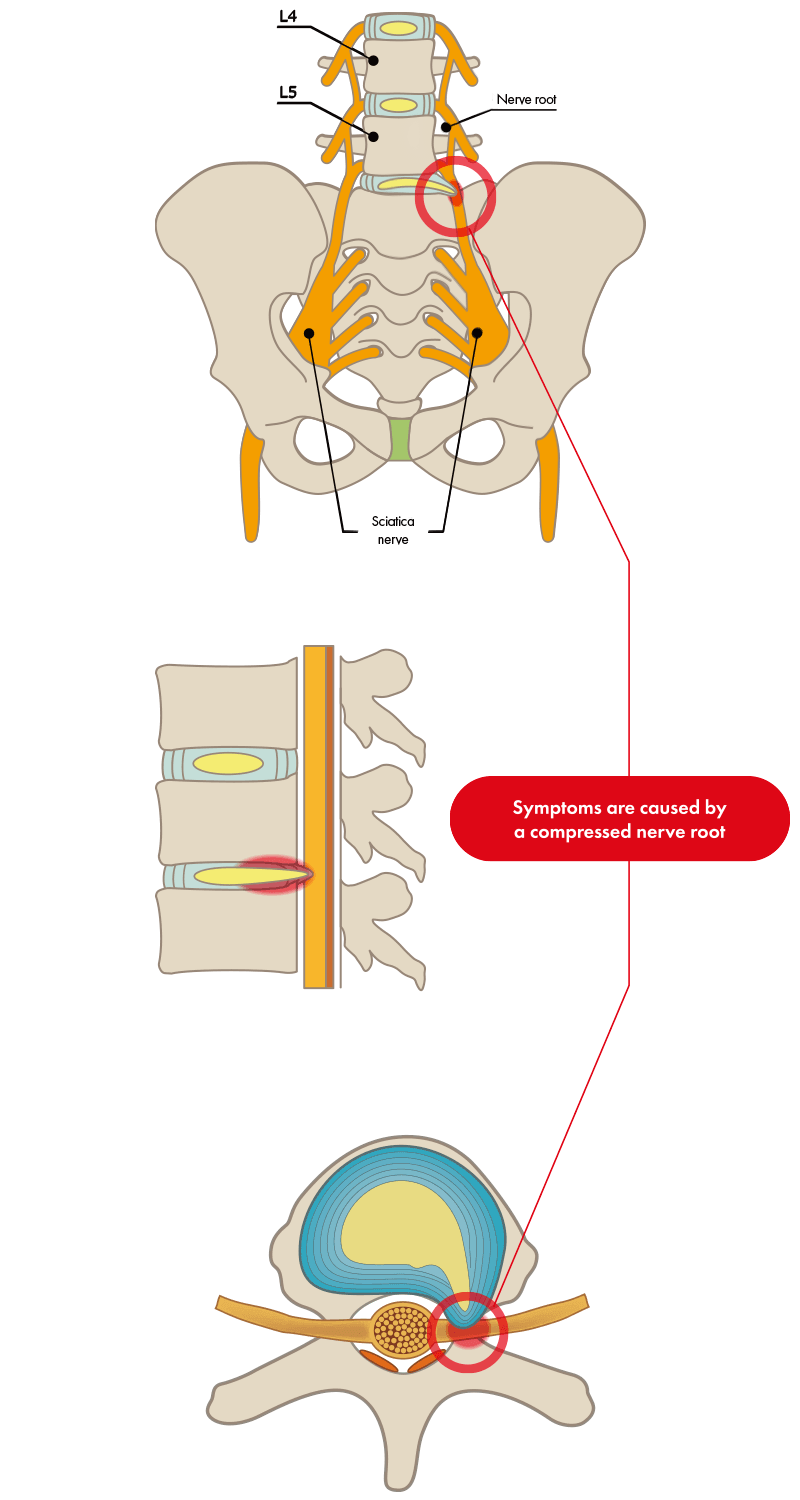
Sciatica refers to symptoms that appear when the thickest nerve in the human body, which extends from the waist to the legs, is compressed or irritated. Symptoms often appear on the buttocks (hips) and thighs from the waist down, with numbness and a sharp pain similar to a jolt of electricity running down the calf and toes, tension in the calf, a cold or burning sensation, and weakness in the legs. In worse cases, chronic pain and numbness may appear, and in more severe cases, it may cause loss of bowel and bladder function, a symptom of back pain that is often seen in middle-aged and elderly people.
What are the causes of sciatica?
Many conditions bring on inflammation in sciatica: not only the herniated discs or spinal stenosis of which we all know but also spinal arthritis, piriformis syndrome, sacroiliac (SI) joint dysfunction, and so on. Therefore, it is necessary to have a test such as an MRI at a medical institution in order to carefully examine sciatica’s cause. Unfortunately, there is no way to understand the real cause of sciatica through osteopathy or massage.
What measures can I take right away if I have the symptoms of sciatica?
Sciatica often occurs in the lower back, lower buttocks, thighs, and calves, so it is important to first seek medical attention if the above symptoms appear. MRI and x-ray examination will be performed, and the symptoms that you experience in your daily life will be communicated to your doctor, in order to determine the appropriate treatment to be used to prevent the symptoms from worsening, and relieve you to some extent from the worries and pain you have been experiencing. Avoid passing your own judgment and consult the nearest clinic or hospital. We can also perform MRIs and X-rays at our clinic.
Surgical treatment of sciatica
Surgical procedures vary greatly depending on the cause of the compression of the sciatic nerve. For sciatic nerve compression caused by disc herniation, the protruding or bulging disc is excised or the nucleus pulposus within the disc is removed. The incision is made from the back, muscles are peeled away from the spine and ligaments are removed to reach the nerve and disc. A discectomy is the removal of a herniated disc that is pressing on a nerve.
There are a few different types of discectomy: the LOVE method, the MD method, the MED method, and the PELD method. Conventional surgery called the LOVE method involves a 5-6 cm incision in the back, while the MD method needs a 3-4 cm incision perform the operation under a microscope. The MED method requires a 1-2 cm incision to insert an endoscope. With the MED method, patients can be discharged from the hospital in less than two weeks time, instead of the one to two months required in the past, because the incisions are very small and the burden on the body is minimal. The PELD method, uses a 6 mm operating tube with 3 mm forceps to remove the disc protrusion. The incision is smaller than the MED method, so the burden on the body is even less, and the patient can be discharged on the same day of treatment. However, there is a risk of postoperative infection or complications due to the removal of the disc. Also, in some cases, it is difficult to undergo another surgery in case of recurrence. At our clinic, we can examine the cause of sciatica, and provide one-day treatment for lumbar disc herniation, facet arthritis, and spinal canal stenosis, which are common causes of sciatica.
Conservative treatment of sciatica
One of the conservative therapies for sciatica is the medication treatment, which includes anti-inflammatory and analgesic drugs, muscle relaxants for oral use to reduce muscle tension, relieve pain and improve pressure on the sciatic nerve, and topical medications such as compresses and ointments. Another conservative treatment is orthotic therapy. Lumbar belts or corsets are used to support the movement of the lumbar spine and avoid postures that may cause sciatica. After the symptoms of sciatica have subsided, exercises and stretching are used to improve the stiffness of the muscles and ligaments. It is also necessary to continue stretching and exercises even after the symptoms of sciatica have completely disappeared, as it can help prevent sciatica. Numbness and pain are caused by inflammation of the sciatic nerve. Inflammation itself usually subsides in about 3 to 7 days, so if the pain is severe during that time, painkillers can be taken. In some rare cases, when the degree of inflammation is strong enough, numbness and pain may continue for about a month, but this is not considered to be a problem.
Does sciatica heal spontaneously?
In most cases where symptoms improve spontaneously, the cause is mild lumbar disc herniation or facet arthritis, and are treated in the same way as a sprains of the hands and feet. In other words, the principle of initial treatment is observation. However, if the symptoms persist for more than a month, if the pain is too severe, or if the symptoms appear repeatedly, surgical treatment may be required, and a search for the cause of the condition should be conducted at a medical institution.
Treatment Overview
The Discseel
Discseel® Procedure
Discseel® Procedure was developed by an American surgeon by the name of Dr. Kevin Pauza, after caring for hundreds of patients who were made worse following their spine surgery. The treatment aims to seal tears in herniated vertebral discs and help them regenerate and recover their, allowing permanent relief of back pain. Dr. Pauza holds a series of 16 patents for a device and Discseel® biologic that support the treatment. Dr.Nonaka has been licensed to perform the Discseel® Procedure in 2018, and more than 2,880 patient have undergone the treatment in our clinic since then. At present, approximately 20 doctors, including physicians from Harvard and Boston Universities are using the Discseel® Procedure to treat their patients in the USA. Dr. Nonaka is the first physician trained to perform the Discseel® Procedure in Japan.

-
The PLOT Method
(Laser And Ozone)Percutaneous Laser and Ozone Treatment

-
The PODT Method
(Ozone)Percutaneous Ozone Disc
Treatment
-
The PLDD Method
(Laser)Percutaneous Laser Disc
Decompression
Sciatica: FAQ
-
- Q
-
What is the difference between low back pain and sciatica?
- A
-
Low back pain and sciatica are both generic terms for symptoms, not diseases. It is also quite difficult to distinguish between low back pain and sciatica, and it is generally considered to be sciatica if neurological symptoms on the lower back and lower limbs (legs) appear.
-
- Q
-
Is it possible to cure sciatica without having recourse to surgery?
- A
-
Even if sciatica can be relieved through different methods, these do not represent a complete improvement at the root level.
-
- Q
-
What can I do to treat sciatica?
- A
-
Avoiding nerve compression as much as possible is one effective way. If you are in a sitting position for a long time, you need to pay attention to stand up and ease compression once an hour, or to use therapeutic exercise to relieve muscle tension.
-
- Q
-
Is there any way to relieve sciatica pain?
- A
-
In the case of chronic low back pain or sciatica, loss of physical strength and a decline in muscle strength may be involved, so inner muscle training may be required.
-
- Q
-
Can the NLC Nonaka Lumbago Clinic treat sciatica?
- A
-
Yes, we can. Sciatica, which is a symptom of conditions such as lumbar disc herniation and lumbar spinal stenosis, can be treated to eliminate the inflammation and improve the condition. First of all, a diagnosis must be made to determine if you are eligible for treatment.
Targeted Conditions
-
Disc Herniation

-
Spinal Canal Stenosis

-
Sciatica

-
Spondylolisthesis

-
Disc Degeneration

-
Lumbar Spondylosis

- HOME/
- Targeted Conditions/
- Sciatica

